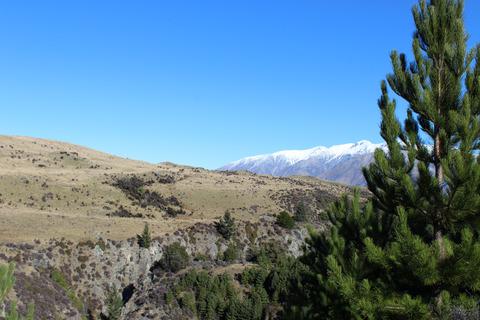当前位置:
X-MOL 学术
›
J. Appl. Ecol.
›
论文详情
Our official English website, www.x-mol.net, welcomes your feedback! (Note: you will need to create a separate account there.)
Dispersal potential rather than risk assessment scores predict the spread rate of non-native pines across New Zealand
Journal of Applied Ecology ( IF 5.7 ) Pub Date : 2021-06-16 , DOI: 10.1111/1365-2664.13947 Sarah V. Wyse 1 , Philip E. Hulme 1
中文翻译:

传播潜力而不是风险评估分数预测了新西兰非本地松树的传播率
更新日期:2021-06-16
Journal of Applied Ecology ( IF 5.7 ) Pub Date : 2021-06-16 , DOI: 10.1111/1365-2664.13947 Sarah V. Wyse 1 , Philip E. Hulme 1
Affiliation

|
- Pine (genus Pinus) species are planted extensively for forestry purposes in areas where they are non-native, with the result that biological invasions by many of these species are of considerable concern in many regions. Owing to the economic importance of these species, management approaches must focus on reducing the risk that they will spread from plantings, which requires access to accurate and rigorous risk analysis protocols. However, while a variety of tools are available that accurately predict which species are likely to naturalise, their performance in forecasting the subsequent rates of spread of species once established remain unproven.
- We compared 10 measures of risk that could be used to forecast the likelihood of pine spread, including established risk assessment tools as well as dispersal-related plant traits: expert assessment of spreading vigour, the Z-score, the Australian weed risk assessment protocol (WRA), seed terminal velocity, tree height, modelled dispersal potential, and planting effort. We examined the extent to which these measures were consistent in their estimate of risk and assessed their ability to accurately predict the spread rates of 10 non-native naturalised pine species within New Zealand.
- Of the measures of risk assessed here, only the models of dispersal potential were able to significantly predict the species' spread rates within New Zealand. In addition, seed terminal velocity was significantly correlated with expert assessment of the species spreading vigour, indicating these two measures capture similar aspects of risk. Modelled long-distance dispersal from forests had the greatest explanatory power for the species spread rates in New Zealand.
- Synthesis and applications. Common weed risk assessment tools and expert knowledge were unable to predict the spread rates of non-native naturalised pine species in New Zealand, and should not be used to provide an index of spread risk. Instead, we recommend a move towards the use of dispersal models when assessing the spread risk of these species, even at national scales. Current practices relying on expert assessment are likely to underestimate the spread rate of species currently considered ‘low risk’, suggesting that these tools may be inadequate for predicting spread of these species.
中文翻译:

传播潜力而不是风险评估分数预测了新西兰非本地松树的传播率
- 松树(Pinus 属)物种在非本土地区被广泛种植用于林业目的,因此许多这些物种的生物入侵在许多地区引起了相当大的关注。由于这些物种的经济重要性,管理方法必须侧重于降低它们从种植中传播的风险,这需要获得准确和严格的风险分析协议。然而,虽然有多种工具可以准确预测哪些物种可能归化,但它们在预测物种一旦建立后的后续传播率方面的表现仍未得到证实。
- 我们比较了 10 种可用于预测松树传播可能性的风险度量,包括已建立的风险评估工具以及与传播相关的植物性状:传播活力的专家评估、Z分数、澳大利亚杂草风险评估协议( WRA)、种子终端速度、树高、模拟传播潜力和种植努力。我们检查了这些措施在其风险估计中的一致性程度,并评估了它们准确预测新西兰 10 种非本地归化松树物种传播率的能力。
- 在这里评估的风险措施中,只有扩散潜力模型能够显着预测该物种在新西兰的扩散率。此外,种子终末速度与专家对物种传播活力的评估显着相关,表明这两种措施捕获了相似的风险方面。来自森林的模拟远距离扩散对新西兰的物种传播率具有最大的解释力。
- 合成与应用。常见的杂草风险评估工具和专业知识无法预测新西兰非本地归化松树种的传播率,不应用于提供传播风险指数。相反,我们建议在评估这些物种的传播风险时转向使用传播模型,即使是在全国范围内也是如此。目前依赖专家评估的做法可能会低估目前被认为“低风险”的物种的传播速度,这表明这些工具可能不足以预测这些物种的传播。



























 京公网安备 11010802027423号
京公网安备 11010802027423号